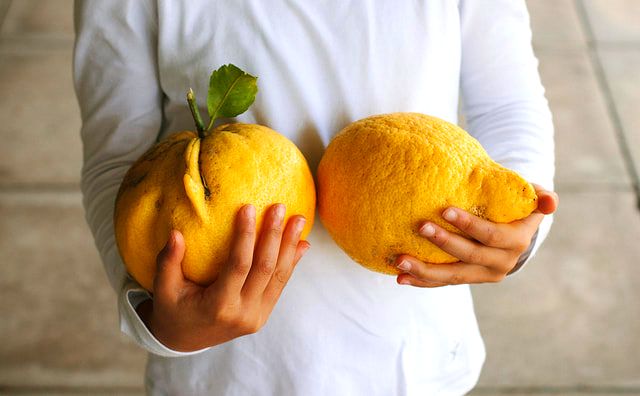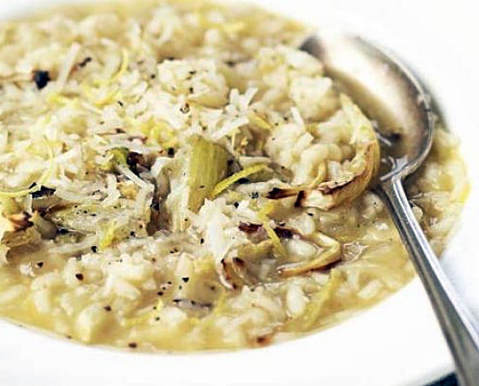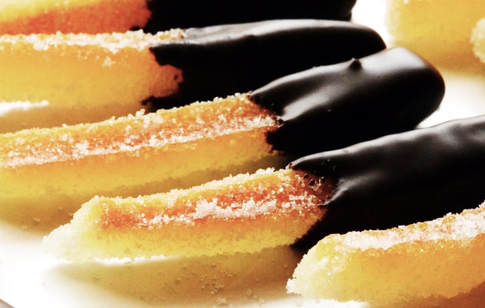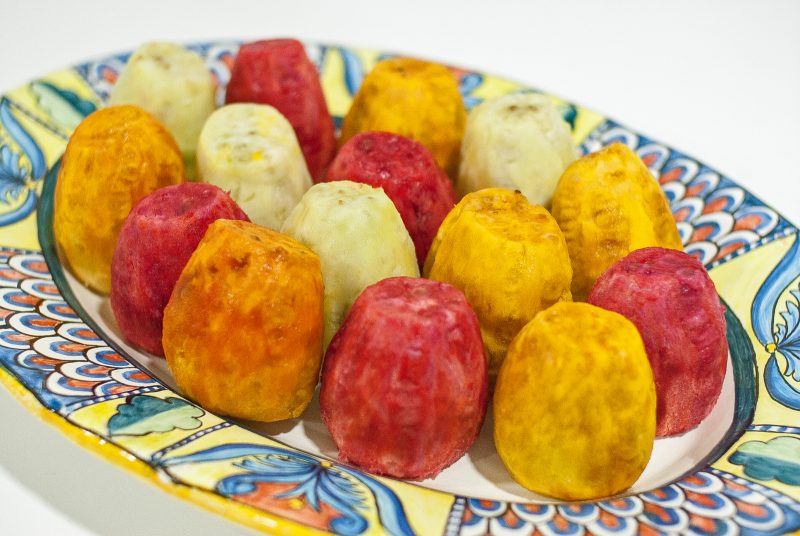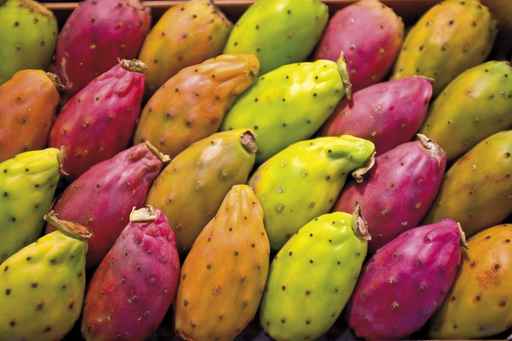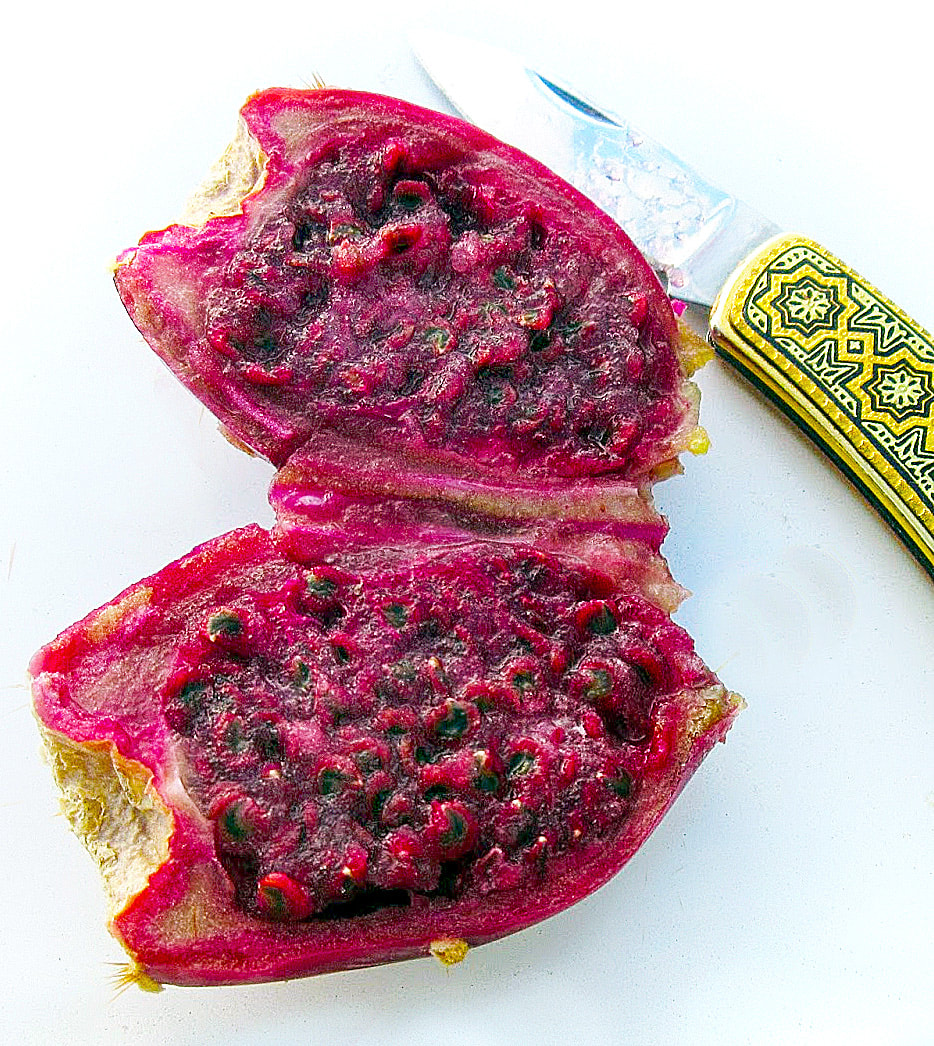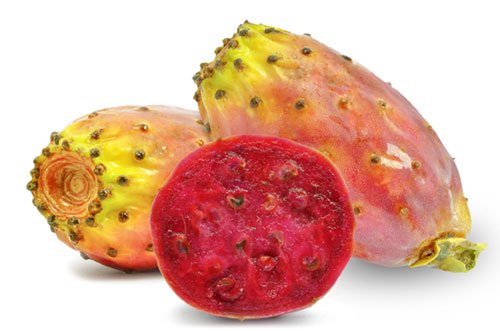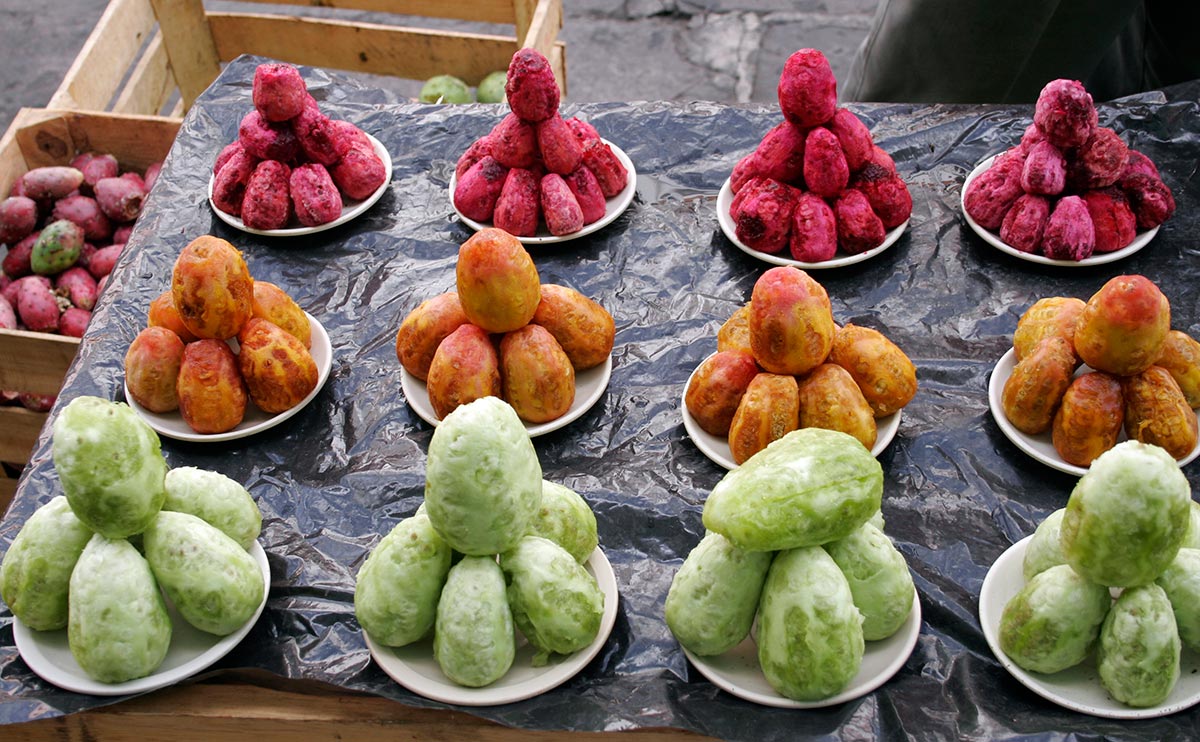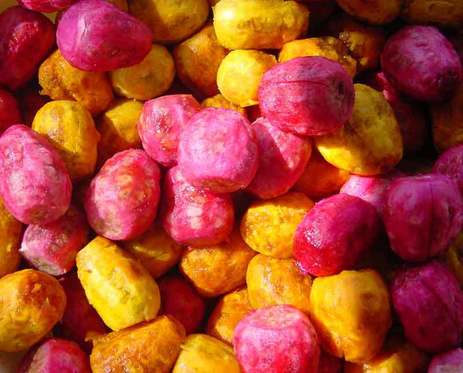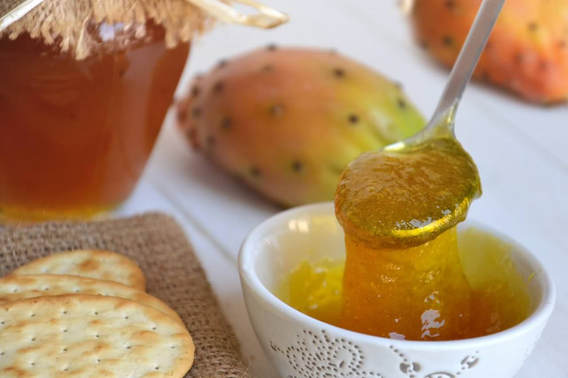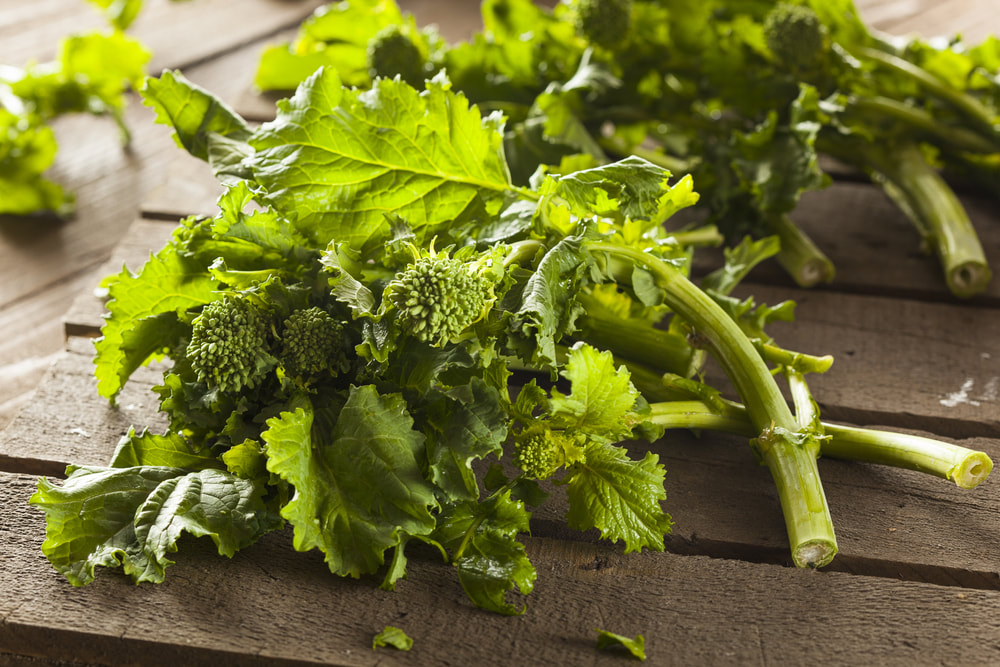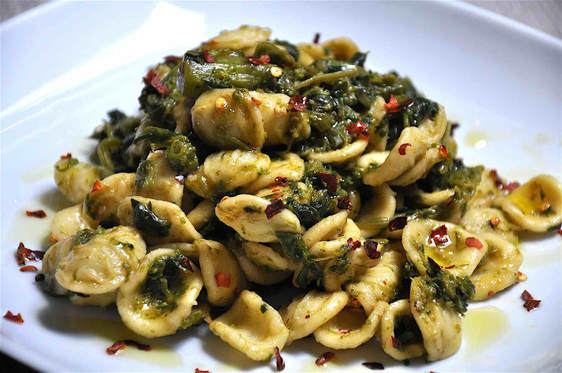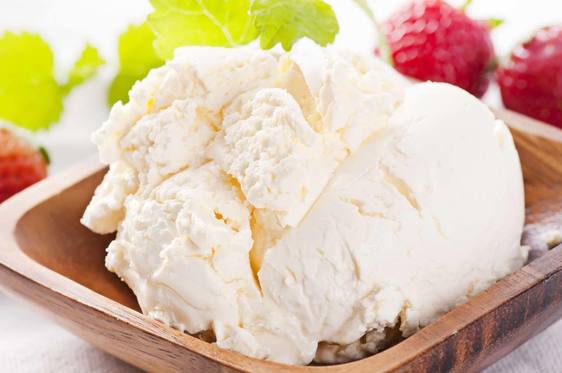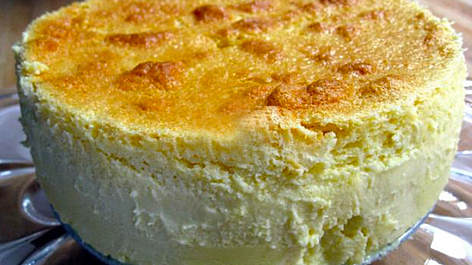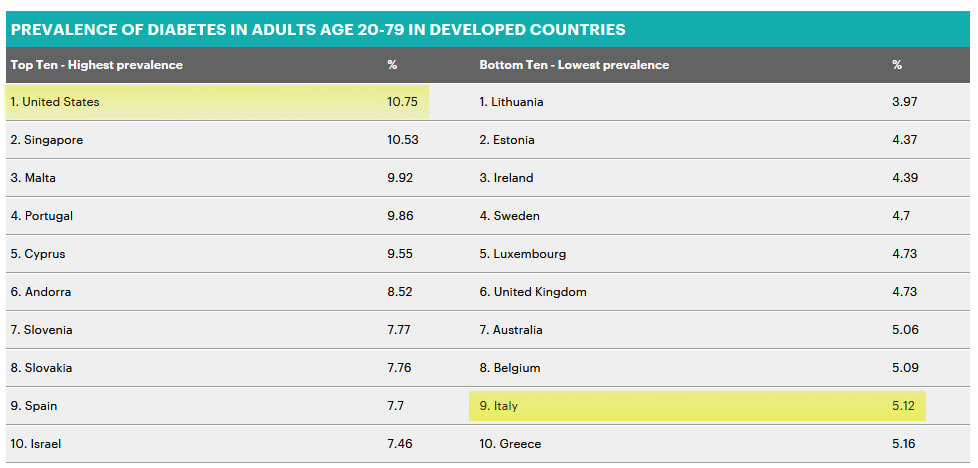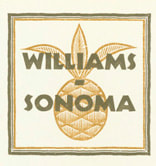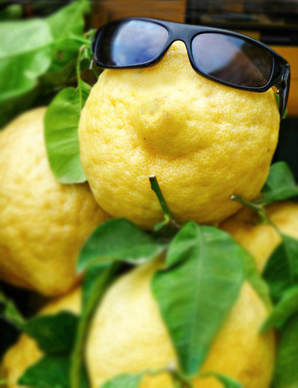 by Jerry Finzi While exploring the villages of the Amalfi Coast, Voyagers are certain to notice that the lemons there are larger than they are used to. They are sure to come across the Sfusato lemon (about two to three times the size of a supermarket lemon) and will be further shocked when they are confronted with the giant-sized, Cedro Citron variety of lemons. They are beastly looking things, with a pebbly surface, strange shapes with a large nipple at one end, and are often as big as your head! 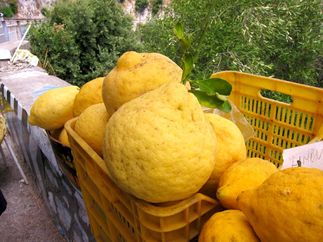 Cedri are primarily found in Italy, from the Italian Riviera down to the Amalfi Coast, though they are occasionally spotted in France, Isreal and even exported to Britain. There are three different citron types: acidic, non-acidic and pulpless. Of the different cultivars, the acidic Diamante is more common in Italy. Cedro citrons are usually up to three to four times the length of common lemons and can measure between 10 and 15 inches in diameter. They can weight up to 3-4 pounds each. The pebbly surface ripens from green to a bright yellow--both colors can be harvested, the peak season being fall and winter. Most--about 70%--of the lemon is white pith from 2-5 inches thick with a soft texture and almost sweet lemony fragrance. In its center is a small amount of segmented pulp with a few pale seeds. This lemon is fairly dry and not used for its juice and the taste is milder than a common lemon. 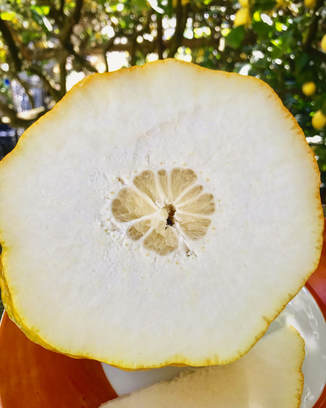 The pith can be eaten raw or cooked: in salads, atop bruschetta, in jams and preserves, in risotto or pickled. The rind of this citron is very aromatic and a bit sweet, and is used to produce "citron", or candied lemon (used in Italian celebration breads and cakes, like panettone). Some claim it can be a remedy for hangovers, coughs and indigestion. Since the Renaissance, the oils from the skin have also been used in perfumery and cosmetics due to their delicate and fragrant scent. If cooking while in Italy (or if you can get some cedri at home), try these recipes: Risotto alla Sorrento with Fennel and Sage 1 Cedro lemon 1-1/2 cups rice for risotto (Carnaroli, Vialone Nano or Arborio) 1-1/4 cups freshly grated parmesan 1 tablespoon unsalted butter, plus another tablespoon to finish 4 tablespoons Extra virgin olive oil 1 head of finoccio (bulbing fennel) - finely diced 3 stalks celery - finely diced 1 cup white white Vermouth 1 quart chicken stock 4 large julienned sage leaves (or 1/2 teaspoon dried-crushed) Sea salt and freshly ground black pepper to taste Directions
Candied Chocolate Cedro Strips Recipe (A great holiday snack) 1 - 2 pound cedro 1 cup sugar 1 pint water 3-5 ounces bitter sweet chocolate
You can store these in an airtight container and serve at the end of a meal with fruit, nuts, biscotti and espresso. © GVI 2018 You might also be interest in:
When Life Gives Them Lemons, Italians Make Limoncello Amalfi Lemon and Chicken Pasta Lemon and Turkey Pasta with Prosecco The ridiculous notion that any restaurant needs a water sommelier seems like a bit on a hidden camera show. But it's not. It's really a thing. Or at least, this German guy Martin Riese thinks it is. He is wildly promoting the idea, and talks of each water's "terrior" (as in, the land and climate wine varieties are growing in). He is surely in the press enough to keep his job at a chic California dining spot, while he also hawks his own brand of water--"Beverly 90H20 Crafted Spring Water". "Crafted?" Really? Now I'm not saying that some waters--especially mineral spring waters--can carry a strong taste of odd minerals, salts, sulfur or magnesium. (Most don't, and the ones that do are used to move one's bowels). But seriously? Do people really need a sommelier to help pair a water to go with food or (get this) with the wine they are drinking? When I lived in France years ago, I quickly learned that the Vittel ads showing arrows going into a man's mouth and coming out of his crotch meant something: That this particularly awful tasting stuff makes you pee like crazy--something the French think is simply wonderful. I stayed away from that brand after learning my painful lesson. Most bottled waters sold in the U.S. are not mineral waters anyway. Many have very natural sounding names that give the impression they come directly from some pristine high mountain spring. But then you discover that they come from the municipal water source of someplace like Newark, New Jersey. In Italy, the choices are many, but did I sense a drastic change in flavor between brand names? Not really. So in restaurants the only question asked was, "acqua naturale o gassata?" Plain water or gassy. The taste was always the same. Wet water or with bubbles. Am I thirsty or do I want to burp after my meal? That's the real question. Water water everywhere and we have to bottle it, brand it and hire someone to tell us which one to drink... No thanks. --Jerry Finzi 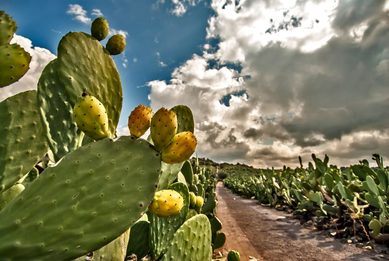 The fruits of the Prickly Pear in Italy are known as Fichi d'India (India Pears), marketed in America with the friendlier, less dangerous name of Cactus Pears. The plant was first introduced into Europe after the discovery of the Americas by Columbus. The fruits were named fichio d’India (Indian fig) because when Christopher Columbus arrived in the new continent and saw prickly pears he thought he was in India. These colorful fruits make a sweet snack or a margarita mixer. Unlike Mexico and other countries, Italy doesn't use the cactus paddles, but simply loves this pear shaped fruit. Intensive plantations across Sicily and the southern mainland make it only second to Mexico in cactus fruit production. 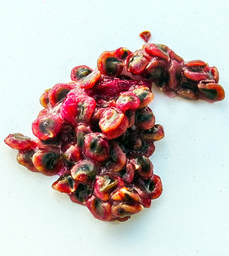 Large, crunchy seeds Large, crunchy seeds In reality, the word “prickly” lessons the dangerous aspect of the spines of this fruit. But it's not the obvious large spines of this cactus that are the problem, the real danger is from the tiny, nearly invisible hair-like spines that completely cover the skin of the fruit that you have to watch out for. If you touch them with your bare hands, you won't be able to wash them off... microscopic hooks dig into your skin causing burning pain. What do they taste like? Many say that Fichi d'India are sweet but not too sweet. Some describe the flavor like a fig crossed with a plum. They are also very seedy, with big, hard seeds. Some like to feel the crunch of the seeds between their teeth, while others eat them as they do pomegranates, swallowing seeds along with the gelatinous flesh (think, "fiber"). In southern Italy (especially Sicily) people love eating them fresh. You will often find them pre-skinned and ready to eat in market displays. The taste varies with the color--white, orange and red. Some say that the red ones have more flavor than the other colors. One interesting tradition is winery owners giving the fruit to their grape-pickers for breakfast to prevent them from eating grapes during the harvesting. This tradition is still kept today. You'll find the best ones during its harvest time in Sicily, from October to December. There is also a Sagra del FicoIndia in the town of Roccapalumba in Palermo Province held usually in the second week of October. During the feast, the town’s streets will be alive with workshops about how to peel and eat the tuna (Sicilian word for the fruit) of the cactus, how to prepare it for consumption, and there will be opportunities to taste products and dishes made from the plant–everything from honey to liquor to a recipe called scuzzulata. More than 30,000 people attend. 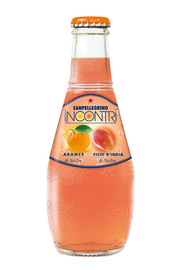 Culinary Use Besides being eaten fresh, Fichi d'India can be used in salads, vinaigrette and made into granita, jams or honey. They are also used in Sicilian cakes, such as Buccellato, which is very common at Christmas time. You can drink juice from the fichi d'India, but it really needs some lemon added for additional acid. In fact, it is often used in commercial drinks as a flavoring. 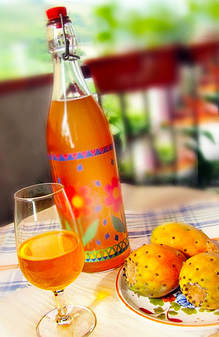 Many make a home brew--Liquore al fico d’india--from the fruit in a similar manner as one would make limoncello, placing the cut up fruit in jars of alcohol with a sugar-syrup and fermenting in a dark place. The resulting liquor is best served very cold. The fruit is high in vitamin C, antioxidants. calcium and phosphorus. --Jerry Finzi This video shows how to skin and harvest a Fichi d'India fresh from the cactus plant--without getting hurt. Here are two Nonnas showing the sensible method of skinning the Fichi d'India by soaking them first in a bucket of water.
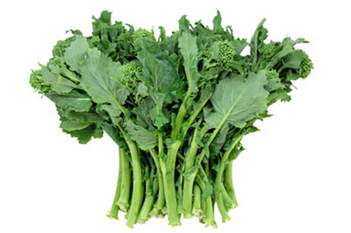
Broccoli rabe (räp’ - eh) is actually a member of the turnip family (rabe in Italian means turnip). The stalks, leaves, florets or yellow flowers are all edible. The leaves and stalks are usually cooked to soften their toughness and the flavor can be described as nutty, bitter, peppery or spicy and reminiscent of mustard greens. Broccoli Rabe can also be called broccoli raab, broccoli rape, or rapini, although, botanically speaking, rapini is a different plant entirely.
Rapini and broccoli rabe are close cousins and their names are often used interchangeably. They are in the same subspecies as the turnip, hence they have the characteristically slightly bitter taste of this group. Neither Rapini or broccoli rabe form the large floret heads that are seen in broccoli. “Rape” is the Italian name for turnip. Broccoli Rabe is not broccolini. Broccolini is a hybrid created in 1993--a cross between broccoli and Chinese broccoli. It has small florets, long stalks, and a few small leaves, where Broccoli rabe has large leaves. Broccolini stalks look like asparagus. 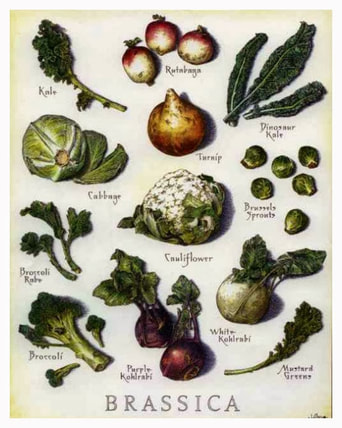
History
Native to the eastern Mediterranean and Asia and one of the earliest cultivated crops, broccoli rabe (Brassica rapa) was first eaten for its roots and leaves. It can also be allowed to flower and go to seed, with seeds collected and crushed for their high oil content (40 percent), commonly known as rapeseed oil, or in today's cooking as canola oil. The oil, in its simplest form can be used as lamp oil and a lubricant, in the same way olive oil has been used throughout history. Brassica rapa may have been used as oil in Italy as early as the 13th century and was the major lamp oil in Europe by the 16th century. Botanically speaking, Brassica campestris, Brassica rapa and Brassica napus are identical. In Italy, there can be different names for it: in Naples it is known as friarielli; in Rome broccoletti; in Puglia, cime di rapa (literally meaning "turnip tops"). It is also known as i broccoli friarelli and sometimes broccoli di rape, rapi, or rapini (little turnips).
How to Use Broccoli Rabe
How to use broccoli rabe in Italy depends on the region... in northern Italy, they will throw away the florets and use only the leaves, while in southern Italy, they will throw away the leaves and each only the florets. It is a cool season crop, so you will find it locally--and fresh--during late fall, through the winter and into early spring. In U.S. supermarkets, you can usually find it year-round, grown in other countries and flown in. Broccoli rabe contains tons of nutrients: 3-1/2 ounces provides half your daily requirement of vitamins A and C. It’s also a good source of folate, potassium, fiber, and calcium. It's also high in antioxidants, protecting you from cancer, inflammation and coronary disease. Make sure you are buying fresh broccoli rabe. Look at the base of the stalks for a cream color (not dark). They should be crisp, not floppy. The leaves should not be floppy or dried out and the buds should be bright green. If they are yellowed, pass them by. It's natural bitterness is lessened with cooking and pairs well with strong flavors like pork sausages or starchy things, like pasta, rice and potatoes. If you like it milder, just cook a bit longer, or after blanching in very salty water (the way you cook pasta), remove from the water, drain and then saute in olive oil. (In Puglia, they tend to omit the blanching in water). As for the stalks, if they are large, peel them first before cooking, they same way you would peel asparagus. If you are using the florets, throw them into the pan after stems or leaves... they are tender and cook fast. If you are growing your own and your plants have started to bolt and produce yellow flowers, it's not a total waste (see below about plants "bolting"), just snip the edible flowers to toss into soups or salads or to top off your plating.
How to Grow Broccoli Rabe from Heirloom Seeds
The only difficulty is that the seeds are very tiny. You can sow them directly in the garden, but then thin the seedlings as soon as possible to 4 - 6 inches apart. You can use the seedlings right away by washing and tossing into your salads and soups. When to grow broccoli rabe is up for debate. While it is considered a cool weather crop, like turnips, lettuces or radishes, many old Italians will tell you that they grow it all year long--even when the weather turns hot. You can plant seeds right after the last frost, but need to grow smaller and faster growing varieties... and remember to cut and harvest just as the florets are forming... not after. Interestingly, varieties might have numerical names that correspond to their growing cycle, such as Quarantina (40 days), Sessantina (60 days) or Novantina (90 days), but regardless of the name, you need to pay attention to the plants and harvest immediately as soon as you see the florets forming... and all varieties tend to form flowers earlier than the seed packets claim. Wait too long--a day or two--and your plants will bolt (stop growing leaves and put their energy into producing seed). If this happens, this bitter plant will instantly turn into that proverbial bitter pill. Stalks will store in your refrigerator for about 10 days, so it's best to stagger the planting of your seed into batches a week or more apart to ensure a fresh supply during the growing season. One warning about growing broccoli rabe from seed... they tend to cross pollinate with other braccias like broccoli, turnips and even it's distant cousin, mustard. Don't plant braccias too close to each other.
If you want an authentic way to make the famous dish from Puglia, Cime di Rapa, check out this video with Gennaro Contaldo, from the Two Greedy Italians cooking show from BBC... Favoloso!
 Zabaglione with peaches Zabaglione with peaches Mascarpone: Pronunciation, mas-car-POH-nay A key ingredient in tiramisu and zabaglione, mascarpone is velvety soft, slightly acidic, and expensive. Mascarpone is milky-white in color and is easy to spread. It is used in various Lombardy dishes, and is considered a specialty in the region. Mascarpone originated in the area between Lodi and Abbiategrasso, southwest of Milan, probably in the late 16th or early 17th century. The name more than likely is derived from mascarpa, an unrelated milk product made from the whey of stracchino (a young, barely aged cheese), or from mascarpia, a word in the local dialect for ricotta. Others claims the name comes from the Spanish mas que bueno, "better than good." Ricotta, unlike mascarpone, is also made from whey. Usually sold fresh in tubs, It is one of the main ingredients in the modern Italian dessert known as tiramisu, and is sometimes used instead of butter or Parmesan cheese to thicken and enrich risotto. Mascarpone is also used to produce Italian cheesecakes. It's a highly perishable cheese meant to be consumed as soon as possible after it is made. How to Use Mascarpone
Substitute: Blend 8 ounces softened cream cheese with 1/4 cup whipping cream. Mascarpone is made from two ingredients... whole cream and citric or tartaric acid (to thicken the cream). Click HERE to see how to make your own. Click HERE for Ciao Italia's Italian Cheesecake recipe. --Jerry Finzi  Now, you all know that I love pizza. I make a different type every week... pan pizza, thin crust, Chicago deep dish style, focaccia, pizza rustica, double-crust, stuffed crust, heart-shaped, New York style, BBQ pizza, white pizza, Philly tomato pie, my special "Thanksgiving Day Pizza" with turkey, cranberries and stuffing... you name it, I've made it (at least, I think I've made them all). And I've often thought that since pizza is a fairly well balanced food which can be varied a lot by the ingredients you top it with, that I could eat one each day for a year and perhaps lose weight. A home pizza chef can even vary the thickness of the dough--no one wants a heavy pan pizza all the time. Well, now someone has done it! Brian Northrup from Scotch Plains, New Jersey, ordered and ate one Domino’s pizza for "one leap year"--367 days--and documented the feat on You Tube, Instagram and other social media. And get this: He weighed 6 pounds less than he did when he started! Did he only eat pizza? Apparently, he also chowed down on entire half gallons of ice cream, too. Honestly, I have an issue with his choice of pizza--Domino's? Ugh. One medium meat-lover's pizza at Domino's is over 2000 calories! If I were to do it I would do eat a wide variety of pizzas... ones that I make at home along with samples from all sorts of pizzerias, restaurants, and perhaps one select fast food chain (I would choose Little Caesar's since they make their dough fresh at each location). I'd enjoy having NY style slices, gourmet individual pizzas at bistros, brick oven pizzas, you name it. Northrup claims, "I've increased my strength, speed, and (most important to me) my cardiovascular endurance over the course of this endeavor. Also, I haven't been sick for a single day of this experience, nor have I injured myself a single time." Obviously, he worked out at the gym nearly every day and did a lot of cardio workouts. Also obviously, he was not overweight (or over 40) when he started this endeavor. Although Domino's didn't sponsor his efforts, he did rightfully earn 24 free pizzas during the year from Domino's Loyalty Program. Loyalty indeed! For more on Brian's adventure with pizza, check out #pizzapocalypse. --Jerry Finzi Want to make your own pizza at home? Click HERE.  Why are Americans More Likely to Get Diabetes? The Better Question is Why Are Italians So Darned Healthy? Of course, one of the main reasons for Italians staying so healthy is the way they eat. There is the Mediterranean diet itself, fish, fresh vegetables, fruit and the use of olive oil in cooking. Meats in Italy are not eaten in large quantities as in the U.S. and the amount of fat in the meats they prefer is also less. Meat is eaten as a separate course in smaller quantities, if at all. Lean pork is popular. 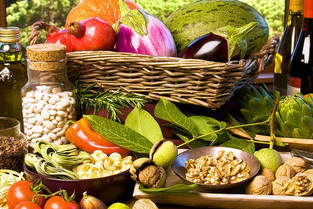 Alcoholic beverages are typically drunk with meals and binge drinking is not a socially acceptable concept (although the young are going to clubs and bars more and more). And of course, there's the health benefits many studies have attributed to drinking a moderate amount of red wine in one's diet. In general, the Mediterranean Diet, especially with its use of olive oil (a mono-unsaturated fat) over butter, is considered Heart Healthy by most studies. People who use olive oil tend to have a lower risk factor of both heart attacks and strokes. Another healthy component in the Italian diet is garlic... and not just to keep vampires away. Garlic lowers the chance of heart disease, lowers blood pressure and prevents strokes. It also is very high in antioxidants, considered to aide in the prevention of Alzheimer's disease. Even pasta and pizza are eaten differently in Italy. Italians eat simple pizzas with healthier toppings--not overloaded like American pizzas. Pasta is not served in large servings as in the States, either. As important for relieving stress in life, most families in Italy eat the family meal together--at the same time. Perhaps this promotes a feeling of well being and affords a sense of comfort to la famiglia.  Italians live longer, too. Why? One reason is the inherent exercise in their daily routines. Many Italians in towns throughout Italy take a walk after dinner, usually with their family members and children... the Passeggiata. Communing with neighbors and relatives while talking a leisurely stroll through town adds to one's well being. In addition, the number of hills and steps the average Italian has to negotiate in their daily lives is much more than in the U.S. Most towns were built in an era of feudal warfare, causing them to be built on top of hills and cliffs for protection of their community. This means that most towns are very hilly and have thousands of steps and inclines. It amazed me whenever I saw octogenarians with canes going to the local alimentari to do their daily shopping. Exercise is something they get, whether they plan on it or not. During my three week Voyage though Italy, I lost 18 pounds, even though I felt like I was eating everything in sight... and gelato sometimes twice a day! 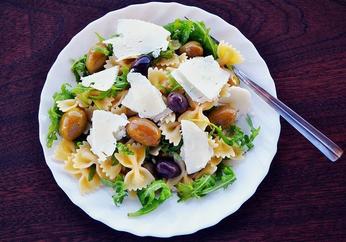 And what about all that pasta and it's effect--especially concerning diabetes? Italians cook their pasta al dente (to the tooth), while Americans tend to eat soft, overcooked pasta. Overcooked pasta has a higher glycemic index, meaning that it can raise your blood glucose. Italians also have smaller portions that Americans do. Think about that the next time you order an overloaded plate of pasta at your local pizzeria or Italian-American restaurant. The rich, Alfredo cream sauce is unknown to most Italians. If you enjoy an Alfredo pasta once in a while, put much less sauce on your pasta. I've seen Alfredo sauce overloaded in most Italian restaurants to the point where the pasta can't be seen! Italians eat pasta without heavy sauces. Oh, and one more thing. Stay away from faux Italian joints like Olive Tree. There is nothing on their menu that is anything like the healthy Mediterranean diet. There is no such thing as dipping bread in olive oil in Italy, and Italians don't automatically put a large bowl of bread or garlic knots (an American thing) on their tables. Consider this old Italian saying... La salute prima di tutto! - Health is first of all! Centanno! --Jerry Finzi |
Archives
July 2023
Categories
All
|

